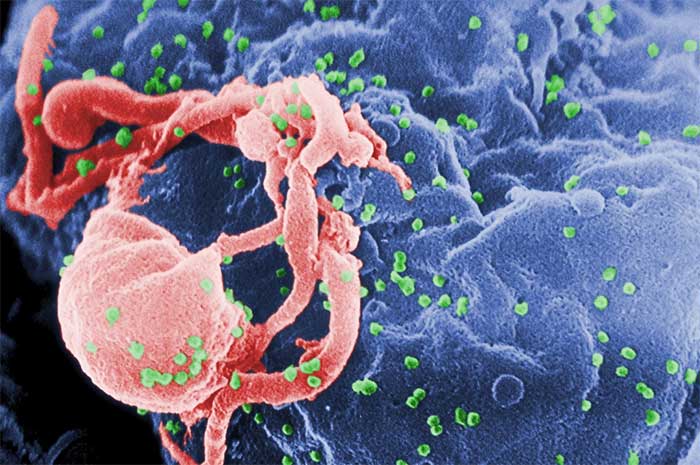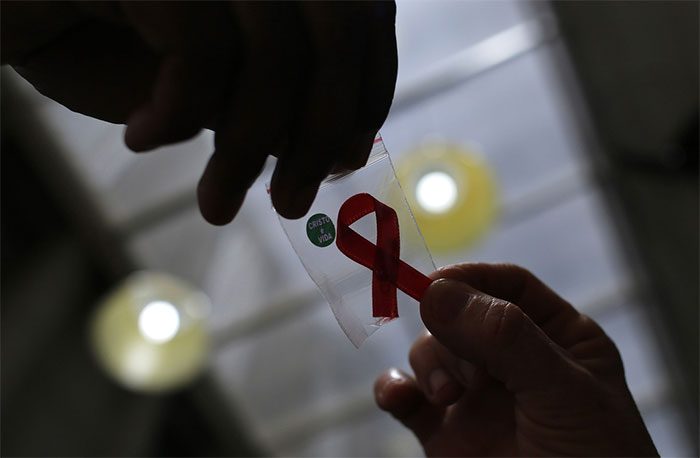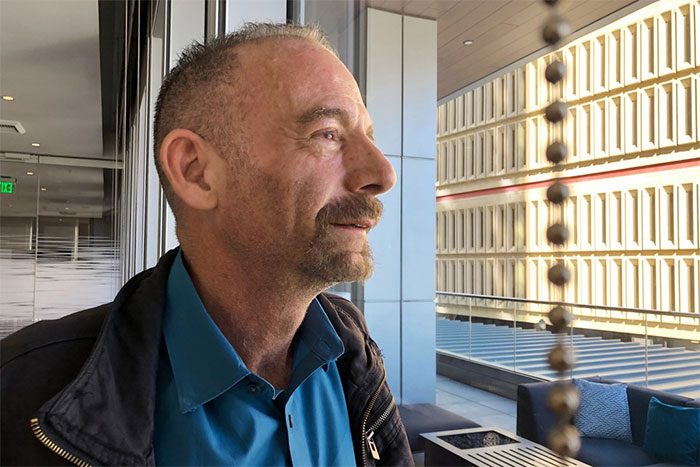Researchers announced on February 20 that another HIV patient has been cured after undergoing a risky stem cell transplant.
The 53-year-old man, referred to by scientists as the “Dusseldorf Patient”, is the third person to eliminate the virus that causes AIDS through an experimental treatment.
Doctors stated that the unidentified man has stopped using antiviral medication for four years without any relapse.
According to the treating physician, nearly a decade after receiving a stem cell transplant from a non-relative donor and more than four years after completing HIV therapy, the Dusseldorf Patient is currently in good health.
Previously, two other patients, known as the “Berlin Patient” and “London Patient”, also achieved spontaneous remission from HIV while being treated for blood cancer using a similar stem cell transplant method, according to Reuters.

An image showing the process of the HIV virus (green) infecting an immune cell. (Photo: CDC/New Scientist).
Curing HIV Through Stem Cell Transplant
The “Dusseldorf Patient” was diagnosed with HIV in 2008, according to New Scientist.
“I still vividly remember the doctor saying at the time: ‘Don’t be too pessimistic about it. We will find a way to cure HIV together,’” he recounted. “At that time, I didn’t believe it and outright dismissed that statement.”
The “Dusseldorf Patient” was diagnosed with acute myeloid leukemia in January 2011, six months after being diagnosed with HIV.
This is the most common type of leukemia in adults, with approximately 3,000 people in the UK and 20,000 in the US diagnosed each year.
It is also a dangerous disease, claiming the lives of 2,700 people in the UK and 11,000 in the US annually.
By February 2013, the Dusseldorf Patient underwent a hematopoietic stem cell transplant, commonly known as bone marrow transplant (HSCT), and was monitored by an international research team led by doctors at the University Hospital Düsseldorf.
This procedure involved destroying the patient’s unhealthy blood cells and replacing them with cells from a donor.
Notably, doctors discovered that the hematopoietic stem cells from the donor contained a mutation disabling the CCR5 receptor, which HIV uses to infect immune cells. This inadvertently became a form of AIDS preventive vaccine.

A nurse hands out red ribbons to mark World AIDS Day at the entrance of Emilio Ribas Hospital in São Paulo. (Photo: Reuters).
The man then underwent chemotherapy and received infusions of donor lymphocytes, which are immune cells capable of destroying remaining cancer cells.
After the stem cell transplant, the Dusseldorf Patient continued antiviral therapy to prevent the virus from replicating in his body.
However, the transplant unexpectedly enabled the immune system of the Dusseldorf Patient to resist HIV. Doctors found no trace of HIV in his blood.
As a result, he stopped taking daily medication in November 2018—six years after the stem cell transplant.
He continued to be closely monitored by his medical team for another four years.
Hope
Details of this case, published in the journal Nature Medicine, show that to date, HIV has not relapsed. The patient has also not experienced an immune reaction enhancement against the virus—an occurrence that can happen if the virus still exists in the body.
This allows the medical team to declare that the Dusseldorf Patient has achieved HIV remission.
They stated that this case provides “strong evidence” that the transplant cured this individual of HIV.
“Today, I am even prouder of the medical team worldwide—those who successfully cured me of HIV, as well as leukemia,” shared the Dusseldorf Patient.
“On this year’s Valentine’s Day, I celebrated the 10th anniversary of my hematopoietic stem cell transplant in a grand manner. My donor was present as an honored guest,” he said.
The man stated that he has decided to dedicate some time to support fundraising for HIV research while also combating stigma associated with the virus through his story.
However, the treatment method in the case of the Dusseldorf Patient is not applicable to all 38 million people living with HIV worldwide, as it is primarily a cancer treatment approach.

The “Berlin Patient” Timothy Ray Brown was cured of HIV 16 years ago. (Photo: AP).
The high-risk transplant is only used when treating life-threatening diseases, according to Sky News.
During this process, there is a risk that the transplanted cells may recognize the patient’s cells as “foreign” and attack them. This life-threatening response of the patient during hematopoietic stem cell transplantation is known as graft-versus-host disease.
The medical team treating the Dusseldorf Patient shared their report, which is the result of the longest and most accurate monitoring and diagnosis of an HIV-infected patient who received a stem cell transplant.
They hope this case will provide a starting point for planning future research on HIV treatment methods.
“After extensive research, we can now confirm that it is fundamentally possible to prevent HIV replication on a solid foundation by combining two primary approaches,” said Dr. Björn Jensen, lead author of the study and head of the infectious disease department at the University Hospital Düsseldorf.
“On one hand, the viral reservoir in long-existing immune cells can diminish. On the other hand, transferring HIV resistance ability from the donor’s immune system to the recipient helps ensure the virus has no chance to spread,” he added.
“Further research is needed on how to implement this outside the narrow conditions we have described,” he stated.
The man in Düsseldorf is the third person to be cured of HIV after receiving hematopoietic stem cell transplants to treat leukemia. More than a decade earlier, a similar method was used to cure HIV in the “Berlin Patient,” Timothy Ray Brown.
Mr. Brown, from Seattle, Washington, was diagnosed with HIV while living in Germany in 1995.
After developing acute myeloid leukemia in 2007, he received a bone marrow transplant from a donor with natural resistance to HIV.
Like the Dusseldorf Patient, he was able to stop taking antiviral medication afterward.
Mr. Brown remained HIV-free for the rest of his life, although he passed away from cancer in 2020 after leukemia returned and spread to his brain and spinal cord.
In the same year, the patient in London, Adam Castillejo, underwent a similar treatment to eliminate HIV.
Another method under investigation is gene editing to modify the CCR5 gene present in the immune system of HIV-positive individuals.


















































